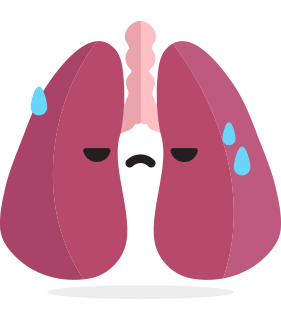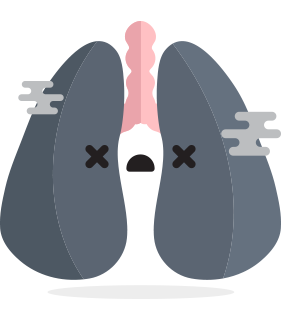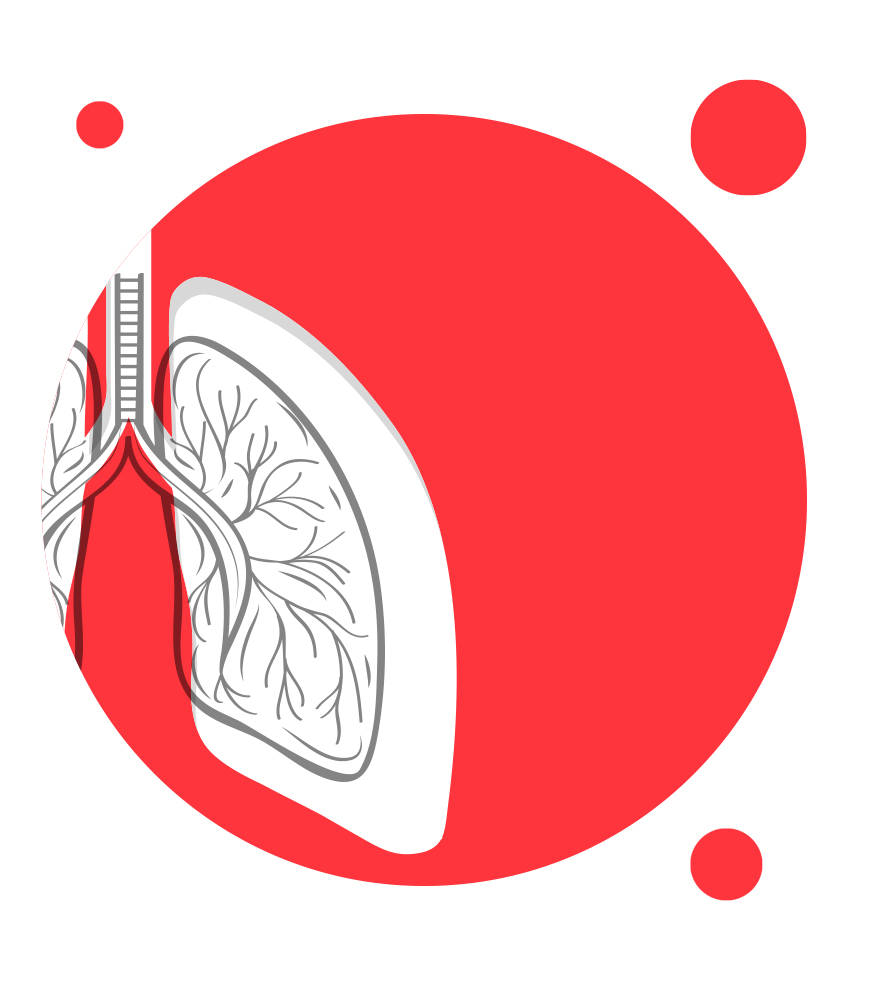Balloon Treatment COPD
Bronchoscopic treatment is performed for patients with chronic bronchitis whose respiratory track have tightened and had a thickness detected in their goblet cells due to smoking which causes chronic bronchitis.
A scraping procesure, called as “desquamation”, is applied by a COPD balloon that reaches to the cell layer which covers the inner layers of all the airways , primarily to ones having 3 and 8 mm diameters, that are entered by a bronchoscope from the intubation tube.
COPD balloons are used which are suitable for the diameter of the bronchus in the airways. These balloons are inflated and deflated on an adjustable pressure and frequency through an electronic pomp and bring bronchus back to its original thickness by scrabing the thickened inner layers. The balloon which is covered by a texture having a scraper feature, allows bronchus to reach its original width by turning the thickened goblet cell layer that produce sputum at the airways into a foamed liquid. The goblet cells that became foamed sputum are evacuated with the bronchoscopic channel by aspiration.
Thus by applying “COPD scraping method”, all bronchus at both lungs that can be reached by bronchoscope get rid of bronchus epithelium layer that had transformed and chronic bronchitis caused by smoking.


Balloon Treatment COPD
Bronchoscopic treatment is performed for patients with chronic bronchitis whose respiratory track have tightened and had a thickness detected in their goblet cells due to smoking which causes chronic bronchitis.
A scraping procesure, called as “desquamation”, is applied by a COPD balloon that reaches to the cell layer which covers the inner layers of all the airways , primarily to ones having 3 and 8 mm diameters, that are entered by a bronchoscope from the intubation tube.
COPD balloons are used which are suitable for the diameter of the bronchus in the airways. These balloons are inflated and deflated on an adjustable pressure and frequency through an electronic pomp and bring bronchus back to its original thickness by scrabing the thickened inner layers. The balloon which is covered by a texture having a scraper feature, allows bronchus to reach its original width by turning the thickened goblet cell layer that produce sputum at the airways into a foamed liquid. The goblet cells that became foamed sputum are evacuated with the bronchoscopic channel by aspiration.
Thus by applying “COPD scraping method”, all bronchus at both lungs that can be reached by bronchoscope get rid of bronchus epithelium layer that had transformed and chronic bronchitis caused by smoking.
What is COPD? Symptoms, risc factors and treatment
Chronic Obstructive Lung Desesase is a progressive lung Disease that makes breathing difficult and characterised by symptoms such as cough, mucus, dyspnoea and wheezing.
As in asthma, the risc factors of COPD are divided into two groups as genetic and environmental.
The most important risc factors are smoking, toxic gases and air pollution.The risc of occurrence of COPD in smokers is 20 fold higher than in non-smokers.

What are the Stages of COPD?
Mild COPD: Sign of shortness of breath that may appear during intensive work or activities that require high effort such as climbing stairs, carrying loads manifests. That stage is also known as the initial stage of the Disease.
Moderate COPD: It is the stage of COPD that does not split the night sleep but induces shortness of breath during simple daily activities.
Serious COPD: At that stage shortness of breath even splits the night sleep and tiredness caused by respiratory distress restricts daily activities.
Severe COPD: It is very hard to breath at that stage of the Disease. Patient has trouble even walking in the house, disturbances at various organs appear because of inadequate oxygene supply to tissues. Heart failure may occure depending on proggressive lung Disease and patient can not maintain his/her life without oxygen support.




Make an appointment
Söke Egemed Hospital which started to serve in November 2012 with the brand of International Söke Hospital is one of the largest private hospitals in our region with 12.000 m2 indoor space, intensive care units, 12 suits and 80 single bed rooms, indoor and outdoor parking areas.

